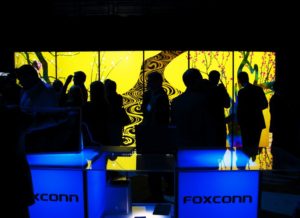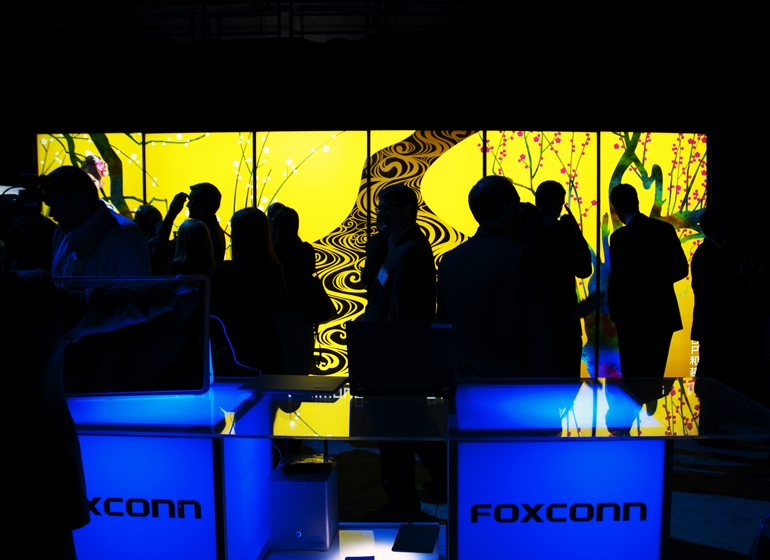If Foxconn Technology Group is going to build a Gen 10.5 LCD fabrication facility in Mount Pleasant, then a manufacturer of glass substrates will have to locate on the same property. The head of the company expected to build the plant, however, made it clear this week his firm would not be carrying all of the cost to do so.

The economic impact study initially released to support the Foxconn project touted the prospect of 400 jobs at a glass manufacturing plant and ever since MMAC president Tim Sheehy mentioned the company’s name during public testimony, the expectation has been the glass supplier would be New York-based Corning Inc.
Wendell Weeks, Corning chairman and chief executive officer, said during an earnings call this week that the strategy the company has laid out makes it clear that “we weren’t going to put in new melting capacity for display unless we get two out of every three dollars from others and that we could keep 100 percent of the revenues and profits.”
The company’s first Gen 10.5 facility in Hefei, China was a $1.3 billion investment, but Corning contributed just $460 million after government and commercial incentives. Weeks was asked if Corning would require a similar financial split if it were building a facility in Wisconsin.
“We would apply that same rule to any LCD manufacturing anywhere in the world, because we believe it’s really important to preserve high returns on capital for our investors,” Weeks said. “If our customers want the leading player in the display industry to be with them, then they’re going to need to subsidize that for our shareholders. Wherever anybody is going to build, we’re going to apply that rule.”
When Sheehy, who was involved in talks that led to Foxconn choosing Wisconsin, mentioned Corning, he described it as a billion dollar investment. The figure would suggest at least $667 million would need to be covered by another source, based on Weeks’ comments.
Bob O’Brien, co-founder and president of Austin, Texas-based Display Supply Chain Consultants, said it’s not surprising Corning would not build a glass plant with its own money. He said the economics of the investment required to build a plant compared to the potential sales of glass make new facilities a difficult proposition.
O’Brien, who spent more than a decade working at Corning and now tracks the industry closely, said the costs to support the plant will fall to Foxconn. It’s unclear though if either company would turn to the state for support.
“That’s up to Foxconn, really,” O’Brien said of asking for additional subsidies.
Wisconsin is already providing Foxconn with $3 billion in tax credits and breaks if the company invests $10 billion and creates 13,000. Gov. Scott Walker has said the state likely won’t offer additional incentives to Foxconn suppliers, saying the company’s presence in Wisconsin should be the major draw to the state for suppliers. Mark Hogan, Wisconsin Economic Development Corp. secretary and CEO, said as much in a July 6, 2017 email to other Walker administration officials, several weeks before Foxconn announced it had chosen Wisconsin.
“Since we will be ‘loading up’ (Foxconn’s) incentive by giving them ‘credit’ for the indirect jobs, we do not anticipate providing incentives for companies wanting to be proximate to (Foxconn’s) facility,” Hogan wrote
Asked if WEDC would award new incentives for a glass manufacturer at the Foxconn site or if Corning could receive any of Foxconn’s incentives, Mark Maley, a WEDC spokesman, said the agency does not comment on pending or potential economic development opportunities.
Maley also declined to comment on whether the prospect of Foxconn subsidizing a glass manufacturer was included in WEDC’s review of the project.
Foxconn did not respond to requests for comment.
O’Brien said it is possible Corning and Foxconn could reach some sort agreement that would create a joint venture or have Foxconn build the plant and Corning operate it on a contract basis. He said in those scenarios an even higher percentage would need to come from Foxconn.
The state’s contract with the company does allow other Foxconn “affiliates” to be added as claimants for tax credits through an amendment. The contract requires Foxconn to own more than 50 percent of something for it to be considered an affiliate. Investments in land and buildings in the electronics and information technology manufacturing zone where Foxconn is building are also eligible for tax credits as long as they “are needed to achieve the specific purpose of completing the project.”
Regardless of how the glass plant is funded, O’Brien said Foxconn likely has been planning on having to cover a portion of the investment.
“It absolutely should have been baked into their cost all along,” he said.
Despite the potential high cost, O’Brien said it is unlikely Foxconn would go with another supplier, noting Asahi Glass Co. and Nippon Electric Glass Co., Corning’s main competitors, face even more challenging economics.
“The notion that it would be someone else I would say is very, very unlikely,” he said.
O’Brien said Corning went two years from announcing a deal for the Hefei Gen 10.5 plant in December 2015 to producing limited amounts of glass. The company is now working to ramp up production in line with demand from BOE Technology Group.


